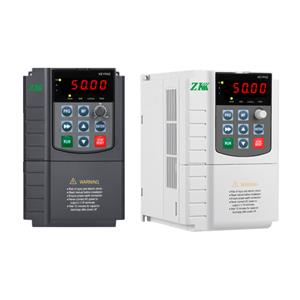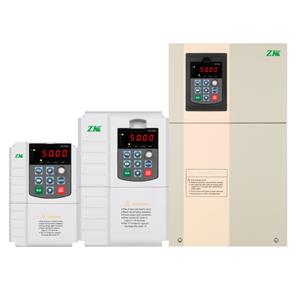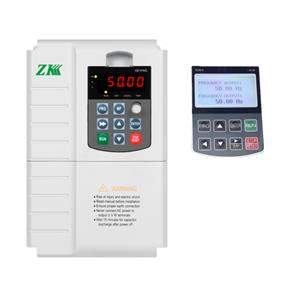Dynamic Simulation and Analysis of a Solar Pump Inverter System
The integration of renewable energy sources, particularly solar power, into water pumping systems has garnered substantial attention due to its potential to mitigate energy and water scarcity challenges in remote and off-grid regions. This paper presents a comprehensive dynamic simulation and analysis of a solar-powered water pump inverter system. The solar-powered water pump inverter system comprises photovoltaic (PV) arrays, a maximum power point tracking (MPPT) controller, an inverter, and a water pump. The study focuses on elucidating the dynamic behavior of the solar-powered water pump inverter system under varying environmental conditions, such as solar irradiance and temperature, and its subsequent impact on system performance. The simulation results yield critical insights into the solar-powered water pump inverter system's efficiency, stability, and adaptability, providing valuable information for optimizing the design and operation of solar-powered water pump inverter systems.
1. Introduction
Water pumping is a critical application in agriculture, domestic water supply, and industrial processes. Traditional water pumping systems predominantly rely on fossil fuels or grid electricity, which are often inaccessible or prohibitively expensive in remote areas. Solar-powered water pump inverter systems present a sustainable and cost-effective alternative by harnessing solar energy. However, the intermittent nature of solar power introduces challenges in maintaining stable and efficient operation. To address these challenges, a solar-powered water pump inverter system typically incorporates an inverter to convert DC power from PV arrays into AC power for the pump, along with an MPPT controller to maximize energy extraction from the PV arrays.
This paper aims to investigate the dynamic behavior of a solar-powered water pump inverter system through simulation and analysis. The study evaluates the solar-powered water pump inverter system's response to variations in solar irradiance and temperature, as well as its ability to maintain stable operation under fluctuating load conditions.
2. System Overview
The solar-powered water pump inverter system consists of the following components:
Photovoltaic Arrays: Convert solar energy into electrical energy.
MPPT Controller: Ensures the PV arrays operate at maximum power point under varying environmental conditions.
Inverter: Converts DC power from the PV arrays into AC power to drive the water pump.
Water Pump: Delivers water from a source to a destination, typically requiring variable power input based on demand.
The solar-powered water pump inverter system's performance is influenced by factors such as solar irradiance, ambient temperature, and pump load. A thorough understanding of the dynamic interactions between these components is essential for optimizing system design and operation.
3. Dynamic Simulation Model
A dynamic simulation model of the solar-powered water pump inverter system was developed using MATLAB/Simulink. The model includes:
PV array models that account for variations in solar irradiance and temperature.
An MPPT algorithm (e.g., Perturb and Observe) to track the maximum power point of the PV arrays.
A three-phase inverter model to convert DC power to AC power.
A water pump model that simulates the hydraulic load based on flow rate and head pressure.
The simulation was conducted under different scenarios, including:
Constant Irradiance and Temperature: To evaluate baseline performance.
Variable Irradiance: To simulate cloudy conditions or partial shading.
Variable Temperature: To assess the impact of temperature fluctuations on PV output.
Variable Load: To simulate changes in water demand.
4. Results and Analysis
The simulation results revealed the following key insights:
System Efficiency: The MPPT controller effectively maximized power extraction from the PV arrays, with an average efficiency of 95% under constant irradiance. However, efficiency experienced a slight decline under variable irradiance due to transient effects.
Stability: The inverter maintained stable AC output voltage and frequency under varying load conditions, ensuring reliable pump operation.
Adaptability: The solar-powered water pump inverter system demonstrated robust adaptability to changes in solar irradiance and temperature, with minimal impact on pump performance.
Energy Utilization: During periods of low irradiance, the solar-powered water pump inverter system's energy output decreased, underscoring the necessity for energy storage or hybrid power solutions in areas with inconsistent sunlight.
5. Discussion
The dynamic simulation and analysis provide valuable insights into the behavior of solar-powered water pump inverter systems. The results indicate that solar-powered water pump inverter systems can operate efficiently and stably under a wide range of conditions. However, challenges persist in addressing the intermittency of solar power, particularly in regions with frequent cloud cover or low sunlight. Future research could explore the integration of energy storage systems or hybrid power sources to enhance system reliability and performance.
This study demonstrates the feasibility and potential of solar-powered water pump inverter systems as a sustainable solution for water pumping applications. The dynamic simulation model offers a robust tool for evaluating solar-powered water pump inverter system performance and optimizing design parameters. By addressing the challenges of solar intermittency and load variability, solar-powered water pump inverter systems can play a pivotal role in promoting energy and water security in remote and off-grid areas.




